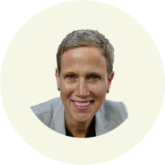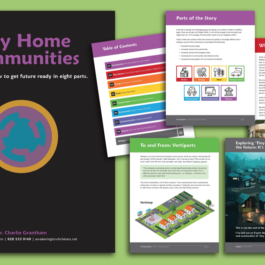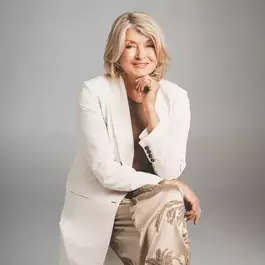What are the top 10 trends for the next ten years? Download the report here.
In 2021, our Signals and Sensemaking panel identified Environmental, Social, and Governance (“ESG”) investing as a weak signal. ESG investing is a hot topic amongst publicly traded companies, but our private sector and public sector clients are also feeling the heat, e.g., the Biden administration is considering implementing rules on mandatory ESG disclosures and very recently moved closer to enacting a sweeping climate disclosure rule.
What is ESG?
This table from the CFA Institute offers examples of ESG factors in general:
Environmental | Social | Governance |
- Climate change and carbon emissions - Air and water pollution - Biodiversity - Deforestation - Energy efficiency - Waste management - Water scarcity | - Customer satisfaction - Data protection and privacy - Gender and diversity - Employee engagement - Community relations - Human rights - Labor standards | - Board composition - Audit committee structure - Bribery and corruption - Executive compensation - Lobbying - Political contributions - Whistleblower schemes |
How can I apply ESG to the future of my community?
It’s helpful to have a baseline of what you’re doing currently, and then design strategies and investments to shore up weak areas and extend your lead in other areas. The National Association of Industrial Office Properties Washington State Chapter (NAIOPWA) provided the following examples:
Environmental | Social | Governance |
Improving energy or water use Increasing climate change policy and action Strengthening sustainability in manufacturing practices and material choices Using procurement contracts to enable investments in renewable power sources and net-positive energy projects | Strengthening attraction and retention of talent Improving workplace productivity Offering effective health and wellness, and volunteer programs Using building standards such as the WELL Building Standard or the "Petals" defined by the International Living Futures Institute (Health & Happiness, Equity, and Beauty) to enhance human health and well-being | Strengthening auditable transparency, which includes developing clear understanding of roles and ownership of any issues that arise Setting organizational policy and governance standards with respect to diversity, equity, inclusion, greater transparency, all levels of the organization, and others |
What’s the future of ESG?
Portfolio managers, private equity funds, and family offices are expected to increase their proportional investments into programs focused on ESG criteria. So if you want to attract those dollars or receive funding from them, you’ll probably need to demonstrate your commitment and plans for ESG.
Given this potential income flow, communities that brand themselves as 'ESG compliant' will likely enjoy tremendous success in attracting these opportunities. This will require:
Emphasizing what they have done and what they plan to do with reference to ESG factors.
Developing a set of performance metrics that are quantifiable, reliably measured, audited, and routinely reported to an independent audit committee.
Investors can then make value-based decisions and compare community development projects.
What is the Rebecca Ryan team seeing and hearing about this force?
Several of our own strategic foresight clients are calling ESG a “top trend.” They expect publicly-traded companies’ demands for ESG reporting will trickle down to the public sector and privately held companies, as well.
In our own research, ESG is one of five weak signals that we see impacting organizations and communities in 2022. The current results of our Are You Ready for Tomorrow quiz suggest it is a sleeper issue – relatively few respondents are actively working on making the shift from talking about ESG to acting on it, e.g., moving beyond discussing climate/environmental impact to investing resources in decreasing our carbon footprint.
We expect communities and organizations that demonstrate meaningful ESG achievements early to emerge as leaders and attract investments, talent, businesses and partners.
What about you? How are you or your organization or community actively working on leveraging an ESG perspective? How can you envision using strategic foresight to anticipate opportunities like this and create even brighter futures?
If you enjoyed this post, please subscribe to our newsletter.

Charlie Grantham
Charlie Grantham, PhD, APF is a futurist, author, and strategist who’s helped dozens of our clients over the years. Charlie served in Special Forces in Vietnam and earned his PhD in Sociology. Afterwards, he worked on the front lines of the telecommunications and remote work revolutions. He’s seen a thing or two. His current focus is health care and well being. Charlie works from Tucson, AZ.

Rebecca Ryan, APF
Rebecca Ryan captains the ship. Trained as a futurist and an economist, Rebecca helps clients see what's coming - as a keynote speaker, a Futures Lab facilitator, an author of books, blogs and articles, a client advisor, and the founder of Futurist Camp. Check out her blog or watch her Q&A on how NGC helps organizations prepare for the future using Strategic Foresight. Contact Lisa Loniello for more information.
Yasemin Arikan Promoted to Director of Futures Research
NEXT Generation Consulting (NGC) announced the promotion of Yasemin Arikan to Director of Futures Research. Arikan will lead the company’s efforts to...
Is Your Housing Market Ready for Your Future?
One of the biggest problems facing many cities and towns is inadequate housing. This problem is most acute for seniors, veterans with disabilities, and low-income groups ...
Three Things Martha Stewart Gets Right About Return to Office (RTO)
The original influencer and the person who invented the "Home" retail category, Martha Stewart, became the latest CEO to tell employees to get back to the office five day...







